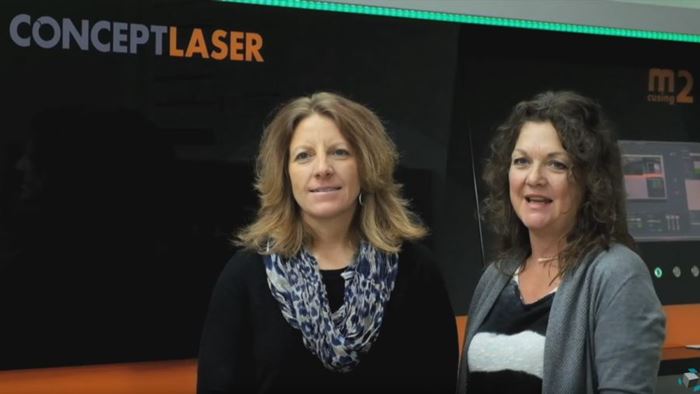Continuing to Champion AM
Colorado manufacturer Faustson Tool has received the Manufacturer’s Edge Manufacturing Innovation Award for efforts in support of a metal AM research center.
The last time I spoke with Heidi Hostetter, vice president of Faustson Tool, the company had just installed a new Concept Laser M2 laser melting machine, and she was still doing her part to help increase the competitiveness of Colorado manufacturers as a leading center for aerospace and other types of manufacturing by working with Manufacturer’s Edge, the University of Colorado and Colorado School of Mines in learning and applying 3D metal printing. That was last summer. Since then Hostetter, and Faustson, have kept very busy.
For one, the company received the Manufacturer’s Edge Manufacturing Innovation Award earlier this year for “demonstrating outstanding leadership in building a practical research center in Colorado to provide testing, performance analysis and materials knowledge for 3D metal printed parts, especially as those parts apply to aerospace and advanced manufacturing.” See video of Hostetter and Faustson President Alicia Svaldi at the award ceremony here.
Hostetter explains, “This 3D Metal Additive Center will be a member-supported research center focused on understanding the characteristics and performance of 3D-printed advanced metal alloys used in advanced manufacturing industries.”
The solid relationships Faustson has built over time with industry, academia and the Manufacturer’s Edge have helped to source grants for the right AM R&D projects, such as this center. The Office of Economic Development and International Trade contributed $2.5 million of Advanced Industries Grant funds, while the founding members matched that with more than $5 million in funds. They also contributed personnel and equipment resources to create the center at the Colorado School of Mines.
“The first six months of this activity will focus on building specified test parts at Lockheed Martin and Faustson Tool, analyzing the characteristics of those parts at a microscopic level at the Colorado School of Mines, as well as analyzing the impact of the various manufacturing processes and conditions used to create the parts,” says Hotstetter. She also notes that this activity will continue indefinitely, beyond the time frame of the grant, as the center will be a self-sustaining center of excellence for Colorado.
At the six-month mark, Manufacturer's Edge and the Colorado School of Mines will roll out initial membership details for companies wishing to participate in further research efforts and results. At that time the center will expand its scope to include new alloys and manufacturing methods, driven by the needs of Colorado manufacturers.
Related Content
-
Possibilities From Electroplating 3D Printed Plastic Parts
Adding layers of nickel or copper to 3D printed polymer can impart desired properties such as electrical conductivity, EMI shielding, abrasion resistance and improved strength — approaching and even exceeding 3D printed metal, according to RePliForm.
-
AM 101: What Is Binder Jetting? (Includes Video)
Binder jetting requires no support structures, is accurate and repeatable, and is said to eliminate dimensional distortion problems common in some high-heat 3D technologies. Here is a look at how binder jetting works and its benefits for additive manufacturing.
-
3D Printed Titanium Replaces Aluminum for Unmanned Aircraft Wing Splice: The Cool Parts Show #72
Rapid Plasma Deposition produces the near-net-shape preform for a newly designed wing splice for remotely piloted aircraft from General Atomics. The Cool Parts Show visits Norsk Titanium, where this part is made.


















